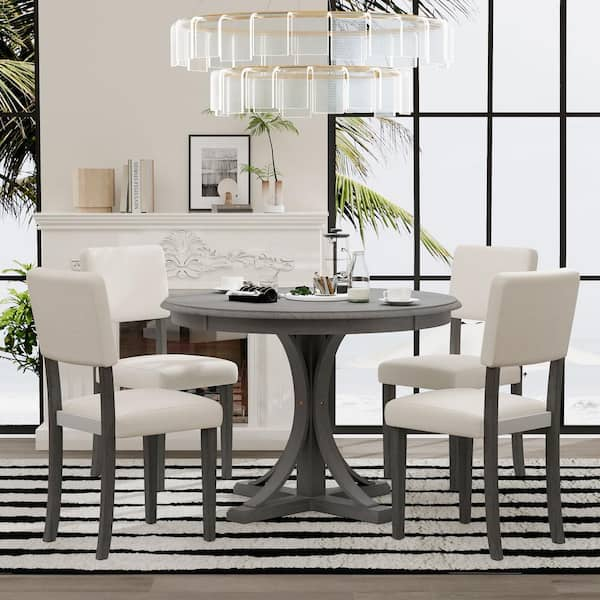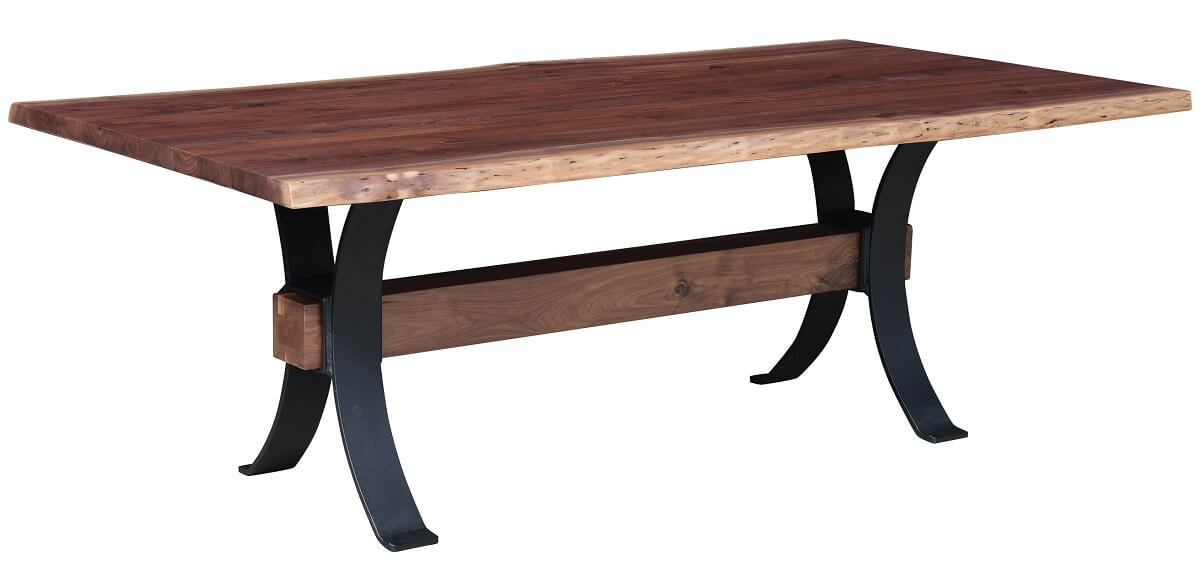How Dining Room Table Legs Can Change the Entire Aesthetic of Your Room
From Typical to Modern: Locate the Ideal Eating Area Table Legs for Your Design
While classic styles such as cabriole and transformed legs evoke a sense of ageless sophistication, contemporary designs like hairpin and geometric choices offer a possibility for striking aesthetic passion. As you think about these components, the question continues to be: just how can you seamlessly integrate these varied leg designs to produce an unified dining experience?
Comprehending Table Leg Styles
The variety of dining-room table leg designs can significantly influence both the aesthetics and functionality of the space. Each leg style contributes unique practical attributes and aesthetic components, accommodating varied layout choices and use needs. Understanding these styles is vital for picking the appropriate table that lines up with your general interior decoration vision.
For instance, conical legs offer a clean, traditional appearance that can improve a room's beauty, while pedestal bases offer stability and make the most of legroom, making them optimal for smaller spaces. Barrette legs, a characteristic of mid-century contemporary style, introduce an industrial panache, permitting an airy, open feeling. Trestle legs stimulate rustic charm, giving robust assistance and a feeling of timelessness.
Moreover, the option of materials plays a substantial function. Wooden legs can bring heat and texture, whereas steel options often communicate a sleek, modern vibe. Inevitably, understanding table leg designs is vital for developing a cohesive eating area that mirrors personal style while making certain usefulness and comfort. By attentively considering these aspects, you can boost both the aesthetic and practical allure of your dining area.
Traditional Table Leg Options
When choosing eating area table legs, traditional choices commonly personify timeless beauty and workmanship. These layouts mirror an abundant heritage and a dedication to quality, making them suitable for those who value timeless aesthetic appeals.
Among one of the most iconic standard leg designs is the cabriole leg, identified by its stylish rounded form. This layout often features decorative makings and is most commonly found in Queen Anne and Chippendale furniture. Another popular option is the turned leg, which flaunts a collection of smooth, rounded forms that supply a timeless appearance while preserving stability.
Additionally, the straight leg, while basic, uses a unadorned and sturdy structure that can mix flawlessly with a selection of tabletop designs. For those drawn to ornate detailing, claw-and-ball feet legs stimulate a feeling of magnificence and can work as a spectacular prime focus in any eating area.
Finally, pedestal bases, although not purely legs, give an alternate conventional option that enables adequate legroom and can be magnificently carved. Each of these traditional leg designs adds to the general ambiance of an eating space, weding feature with aesthetic allure.

Modern Table Leg Designs
Modern table leg layouts provide a varied variety of designs that highlight ingenious materials and tidy lines. These layouts commonly prioritize performance while functioning as striking prime focus within a dining room. Minimalist visual appeals are widespread, with legs crafted from materials such as metal, glass, and engineered timber, which contribute to a contemporary and airy feeling.
One popular style is the hairpin leg, defined by its slim, tapered structure that gives stability without overwhelming the table top (dining room table legs). This style is commonly found in mid-century contemporary furnishings and can easily complement numerous table shapes. One more fad is the use of geometric shapes, where legs might tackle angular or asymmetrical kinds, including visual rate of interest and a touch of virtuosity

Mixing Designs for Special Areas
Typically, house owners seek to create unique dining spaces that mirror their individual design by blending various design components. This strategy permits the unification of diverse looks, leading to an unified yet distinctive environment. For circumstances, coupling a rustic wood table with sleek, modern steel legs can produce an appealing contrast that boosts the space's overall allure.
Furthermore, integrating vintage table legs with modern tabletops can stimulate a sense of background while preserving a modern-day sensibility. Such combinations not only display private taste however also motivate creativity, permitting property owners to curate a room that feels read both individual and inviting.
Shade plays a vital role in this mixing procedure; choosing table legs that enhance or contrast with the existing color design can improve visual rate of interest. For instance, whitewashed legs can soften the boldness of a dark table surface area, creating a balanced visual.
Tips for Picking the Right Legs
Selecting the right table legs is necessary for achieving both performance and visual appeal in your dining room. Begin by considering the general design of your area. Conventional setups gain from legs that include elaborate carvings or transformed layouts, while contemporary spaces may ask for streamlined, minimal styles.
Next, evaluate the elevation and security of the legs. dining room table legs. Basic table vary in between 28 to 30 inches in elevation, so make certain the legs complement this measurement for comfort. Furthermore, durable products, such as wood or steel, can boost stability and moved here longevity
Assess the leg shape also-- choices consist of right, tapered, or stand layouts. Straight legs supply a classic look, while tapered legs can add a touch of elegance. Pedestal bases offer adequate legroom and are suitable for smaller sized rooms.
Verdict
In recap, picking the excellent dining-room table legs calls for mindful factor to consider of both modern-day and standard designs. Standard choices such as cabriole and turned legs offer timeless elegance, while modern-day layouts like barrette and geometric shapes offer a contemporary touch. By integrating leg design, elevation, and material with the overall décor, a cohesive and welcoming ambience can be accomplished. Ultimately, the chosen table legs need to show the preferred aesthetic, boosting the eating experience within the space.
The variety of dining room table leg styles can considerably affect both the appearances and capability of the space. Inevitably, comprehending table leg styles is necessary for creating a natural dining area that shows personal design while ensuring functionality and comfort.One of the most famous traditional leg designs is the cabriole leg, characterized by its stylish bent shape. Straight legs supply a classic appearance, while conical legs can add a touch of style.In summary, choosing the ideal dining area table legs requires cautious factor to consider of both conventional and contemporary designs.